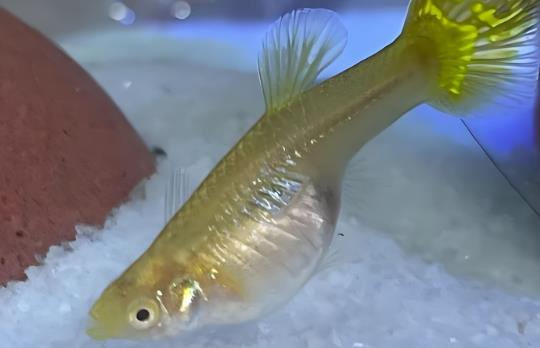A Guide to Guppy Tank Mates
I. Suitable Tank Mates for Guppies
Tetras (e.g., Neon Tetras, Cardinal Tetras)
Small in size (3–5 cm), peaceful in temperament, and share the mid-water layer with guppies—no conflicts will occur.
Avoid mixing with larger tetra species (e.g., Congo Tetras), as they may compete for food or harass guppies.

Livebearers (e.g., Moonfish, Molly Fish)
Belong to the same family (Poeciliidae) as guppies, adapt to similar water conditions (slightly alkaline hard water), and have a gentle nature, resulting in low compatibility risks.
Swordtails require cautious mixing: they swim quickly and may chase guppies.
Small Catfish (e.g., Otocinclus Catfish, Pearl Corydoras)
Bottom-dwelling fish whose activity area does not overlap with guppies. They effectively clean up leftover food and are non-aggressive.
Avoid mixing with catfish species that grow larger in adulthood (e.g., Chinese Algae Eaters), as they may occupy too much space.
Peaceful Small Cyprinids (e.g., Zebra Danios, White Cloud Mountain Minnows)
The number of Zebra Danios should be controlled, as their fast swimming speed may harass guppies; White Cloud Mountain Minnows school well and are suitable for cohabitation.
II. Unsuitable Tank Mates for Guppies
Betta Fish (e.g., Siamese Fighting Fish): Have strong territorial instincts and will attack the long fins of guppies.
Tiger Barbs: Have a habit of nipping the fins of other fish, which may injure guppies.
Goldfish: Require lower water temperatures (18–22°C), conflicting with the temperature needs of guppies (22–28°C).
III. Key Notes for Cohabitation
Water Quality Management
Maintain a water temperature of 22–28°C and a pH level of 6.5–7.5. Perform regular water changes (20%–30% weekly) to ensure sufficient dissolved oxygen.
Tank Density
Allocate 1 liter of water per 1 cm of fish body length. For example, 10 guppies (5 cm each) + 10 tetras (3 cm each) require a tank of at least 80 liters.
Feeding Strategy
Feed in separate areas to avoid food competition; feed 2–3 times a day, and the food should be consumed within 5 minutes.
(Note: Closely observe the interaction between fish during the initial cohabitation period, and isolate aggressive individuals promptly.)
